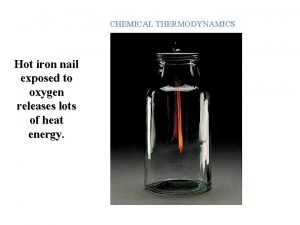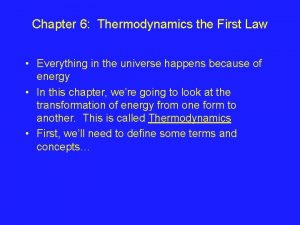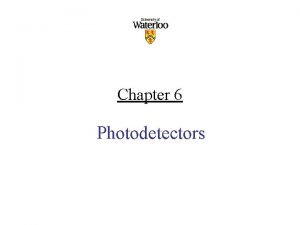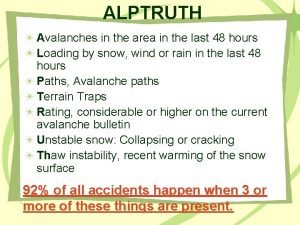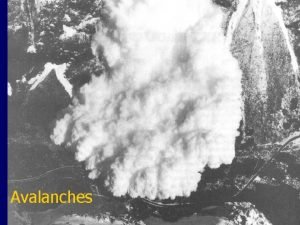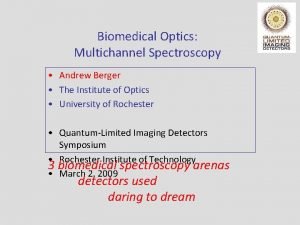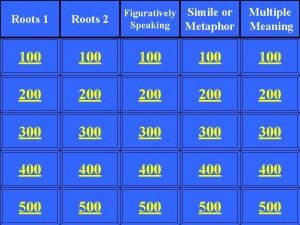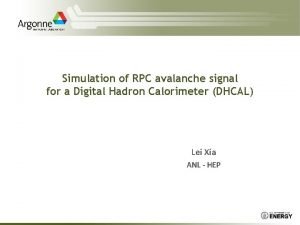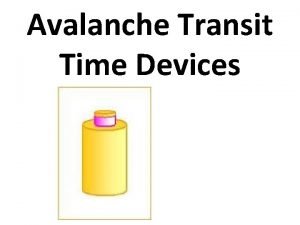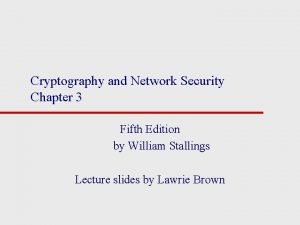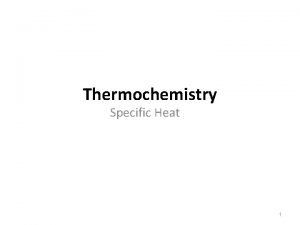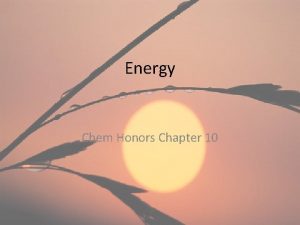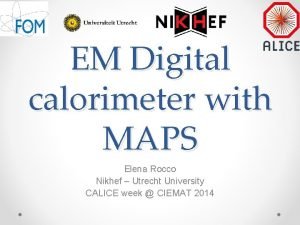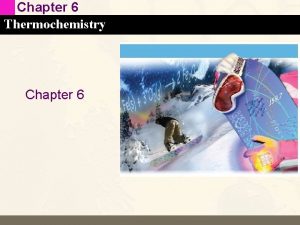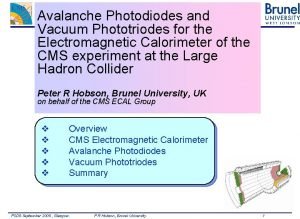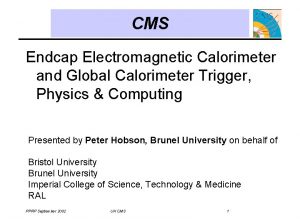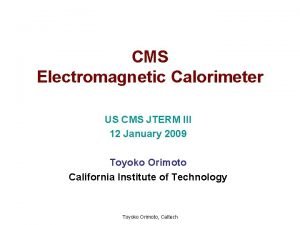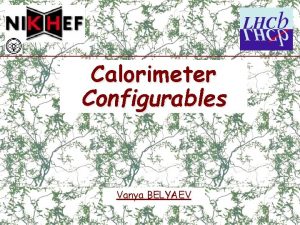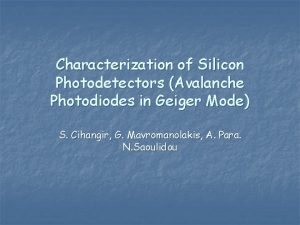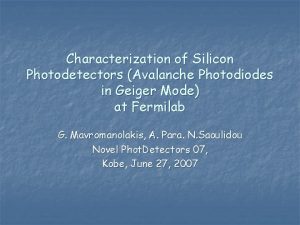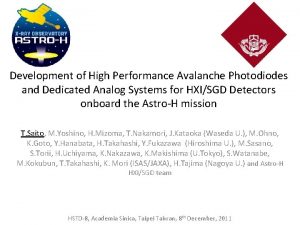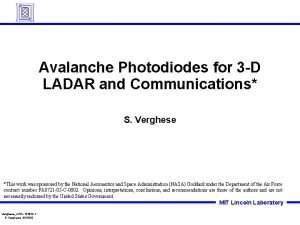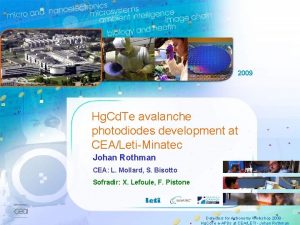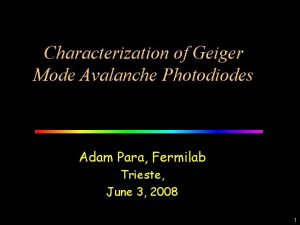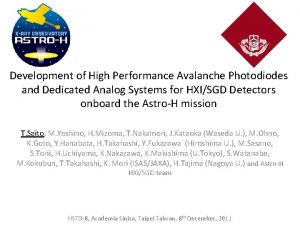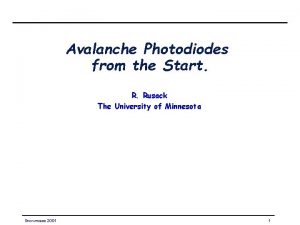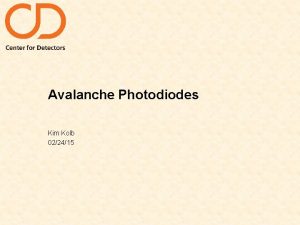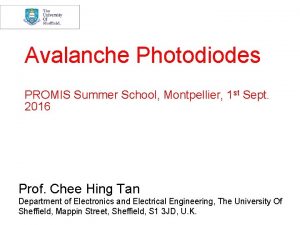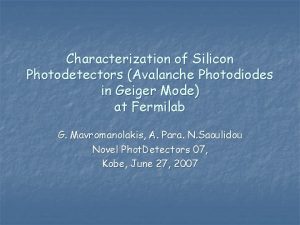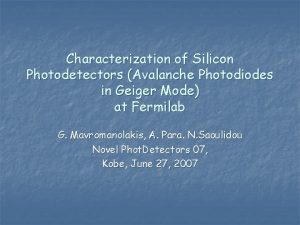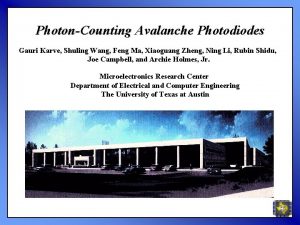Avalanche PhotoDiodes APDs for the CMS Electromagnetic Calorimeter


















- Slides: 18

Avalanche Photo-Diodes (APDs) for the CMS Electromagnetic Calorimeter (ECAL) K. Deiters, Q. Ingram, D. Renker, T. Sakhelashvili Paul Scherrer Institute, Villigen, Switzerland I. Kronqvist, R. Rusack, A. Singovski, P. Vikas University of Minnesota, Minneapolis, USA A. Kuznetsov, Y. Musienko, S. Reucroft, J. Swain Northeastern University, Boston, USA Z. Antunovic, N. Godinovic, I. Soric University of Split, Croatia HEP 2001, Budapest. July 13 th 2001.

APDs Outline • Requirements • Performance • Radiation Hardness • Conclusion

The Detector al ryst c O 4 Pb. W

APD structure Photo-conversion electrons from the thin p-layer induce avalanche amplification at the p-n junction Electrons from ionising particles traversing the bulk are not amplified 2 APDs (each 5 x 5 mm) mounted in a capsule ready for gluing to a crystal

APD Requirements Operate in 4 Tesla field Radiation hard (2. 1013 n/cm 2 + 250 k. Rad) Fast ( 10 nsec) Compatible with ECAL energy resolution requirement Insensitivity to particles traversing the diode Amplification Cheap (122400 pieces) ==> 8 year R&D effort by Hamamatsu (and initially EG&G) in close collaboration with CMS ECAL


APD Impact on Energy Resolution ECAL energy resolution: CMS design goal : a ~3%, b~0. 5%, c~200 Me. V APD contributions to: a: photo statistics (area, QE) and avalanche fluctuations (excess noise factor) b: stability (gain, sensitivity to voltage, temperature variation, aging and radiation damage) c: noise (low capacitance, serial resistance and dark current)

APD Properties Active area (2 APDs per crystal) Quantum efficiency Light collection within 20 nsec Operating voltage Gain (M) Capacitance Serial resistance Dark Current Voltage sensitivity (1/M*d. M/d. V) Temperature sensitivity (1/T*d. M/d. T) Excess noise factor Thickness sensitive to ionising particles 5 x 5 mm (each) 75% at 430 nm 99 ± 1% ~ 380 V 50 (Max >1000) 80 p. F 3Ω < 50 n. A (~ 10 n. A typical) 3. 15 % / V - 2. 2 % / V 2. 1 5 μm After radiation and accelerated aging equivalent to 10 years of LHC, ONLY quantity to change is the dark current, which rises to 5 μA

APD Gain, V and T sensitivity Voltage sensitivity Operating Gain 50 —> Temperature sensitivity Well behaved up to gain ~2000

APD Capacitance, Quantum efficiency ^ Vr APD is fully depleted at operating voltage ^ Pb. WO peak emission Q. E. is 75% at peak emission but APD insensitive to traversing ionising particles (5μm effective thickness)

Breakdown - Operating Voltage 1999 - 2001 Vb - Vr found important indicator of radiation hardness Absolute value should be large Spread in Vb - Vr is small First production 2001

Reliability Production in 2000 Few % “died” (breakdown voltage drops below operating voltage) 1) in accelerated aging testing (80 -90 deg) 2) in radiation testing (protons) ==> Production stopped 1): Origin soon traced by Hamamatsu. 2): Proved much harder. • • Problem was solved. Complex with number of different causes: over 6 months intensive R&D by Hamamatsu review of radiation testing procedures at PSI ==> Production restarted (3/2001)

Radiation Hardness: Conclusion u Basic APD structure is radiation hard u APDs found sensitive to Co γ-irradiation, not sensitive to neutrons: problem at surface, not inside the silicon u Solution: modify geometry to reduce lateral fields (rounder corners, change spacings between structures, field clamps, etc. ) basic APD structure unchanged. u Plus: screening of all APDs with Co γ-irradiation (500 k. Rad) Reject on lowered Vb, anomalous dark current followed by 2 weeks annealing/aging testing at 90 deg sampling (5%) testing with 2 x 1013 neutrons/cm 2

Cobalt screening results Change in Vb after Co Irradiation Induced dark current almost completely anneals after 2 weeks at 90 deg -----Vr--------------------------------- Reject 2 APDs with change in Vb X 1 day after Co irradiation + after 10 days at 90 deg

Radiation Hardness: Status Of first 2700 APDs delivered in 2001, ~ 3% failed Co irradiation Investigation: 1) All APDs from a few wafer positions are bad (over half the failures) 2) APDs from random wafer positions Hamamatsu: 1) Bad position on mask. Reject all APDS from here 2) Dust, etc Reject APDs based on screening Other indicators : Vb-Vr is abnormally low Discharge-like noise …. . (still investigating) Status: In next two Lots tested (7/01) only ~ 0. 5% failed Co irradiation Of ca 500 APDs neutron irradiated, NONE have failed

Neutron irradiation of APDs with the Minnesota Cf source (4 days) All 25 APDs behave similarly Spread in induced dark current largely due to flux non-uniformity Dark current (log) vs time

APD Summary The Hamamatsu APD meets all the specifications Radiation hardness proved hardest to achieve Now satisfactory. Expect to achieve >> 99% Mass production rising to full rate (>1000/week)

Photodetectors for the CMS ECAL t Photodetectors developed for the barrel (APDs) and end-cap (VPTs) of the CMS ECAL t Fast, work in 4 T field, radiation hard t Both meet the specifications necessary for CMS to find the Higgs in the favoured mass range (and much more…. )
 Coffee cup calorimeter vs bomb calorimeter
Coffee cup calorimeter vs bomb calorimeter Coffee cup calorimeter formula
Coffee cup calorimeter formula Capacity to do work is called
Capacity to do work is called Physical principles of photodiodes
Physical principles of photodiodes Alptruth avalanche
Alptruth avalanche Avalanche
Avalanche The avalanche devoured everything in its path
The avalanche devoured everything in its path Andrew berger rochester
Andrew berger rochester Vproper
Vproper 100 similes
100 similes Avalanche rpc
Avalanche rpc Class 5 avalanche
Class 5 avalanche What are avalanche transit time devices
What are avalanche transit time devices Avalanche effect in des with example
Avalanche effect in des with example Constant volume calorimeter
Constant volume calorimeter Homemade calorimeter
Homemade calorimeter The seven forms of energy
The seven forms of energy Digital calorimeter
Digital calorimeter Constant volume calorimeter
Constant volume calorimeter

